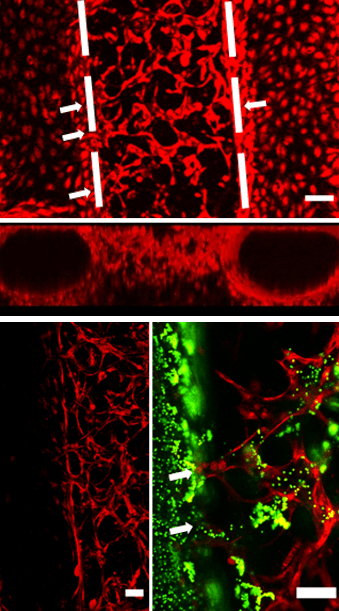To build more realistic organ-on-a-chip models and broaden their applications, various methods have been reported on vessel construction for on-chip tissue models. These methods can be generally grouped into two categories. The first approach constructed vessels on microfluidic devices by seeding endothelial cells into pre-made channels. Vessel constructed with this approach usually has a diameter range from 50 to 400 µm. To construct vessels with a diameter smaller than 50 µm, a second approach based on endothelial cell self-assembly in hydrogels, have been reported.
We hypothesized that by providing proper growth conditions, induced anastomosis between the endothelialized lumens and HUVEC self-assembled capillary network can be achieved, thus a hierarchical and perfusable vascular network can be established. The results show that the hierarchical vessel network can be constructed by inducing the anastomosis under the continuous medium flow (top panel), and perfusability was validated with fluorescent beads (bottom panel).


Recent Comments